
Above is a typical album page found in an album from turn-of-thetwentieth-century Hong Kong
Several months ago, in my daily online search for objects and photographs that challenge my eye, I came across an old Hong Kong photo album from the turn of the twentieth century. To my eye, the photographs were largely disappointing, as most were rather mundane and almost all of them were in poor condition. The photo album was most likely created by someone from Great Britain—possibly a sailor stationed on a ship. He or she was well versed in military jargon.
While the images were below average, I noticed that there were typewritten captions on each page. At various points in the lovingly composed descriptions, the words often switched between black and red type. Almost like a contemporary hashtag, this was done for emphasis, to draw the eye to key words. Not only that, but each caption was bounded by a border of asterisks, carets, or other decorative bits of type.
Can captions survive without their photographs? Is a caption useless without its image? Captions are supposed to explain or describe something. Photographs and illustrations can often hold their own without having its counterpart, but rarely do we see it the other way around.
Writers and artists know that a well-written descriptor can create its own set of imaginary visuals, like listening to the radio. In this case, the typewritten notes here are quirky and artful, and worthy of sharing.
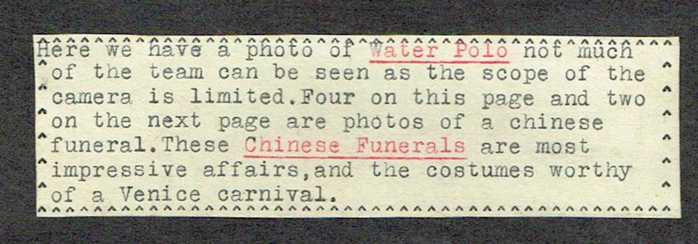

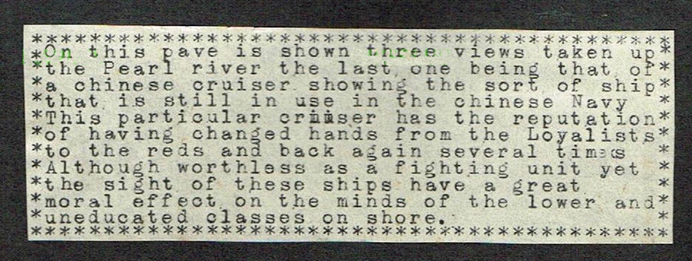
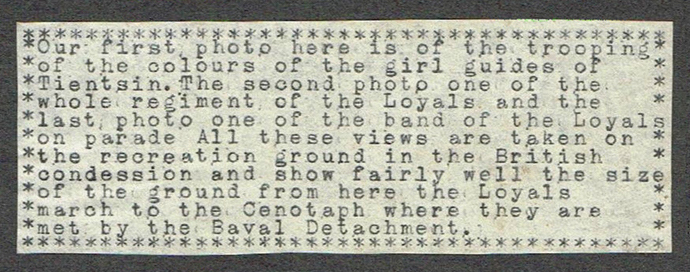
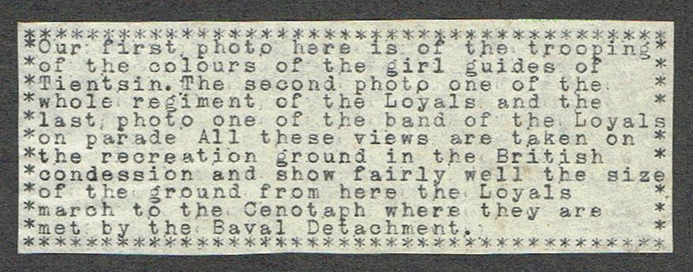


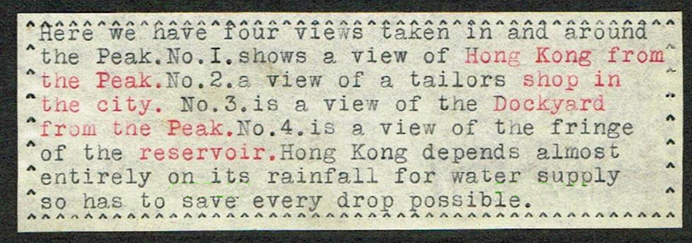


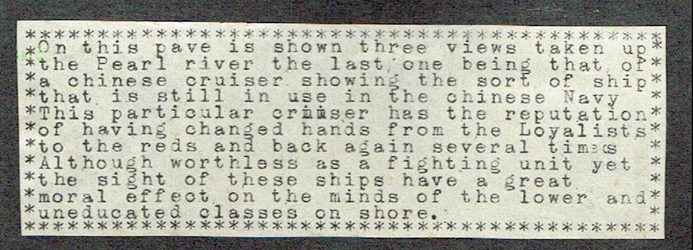




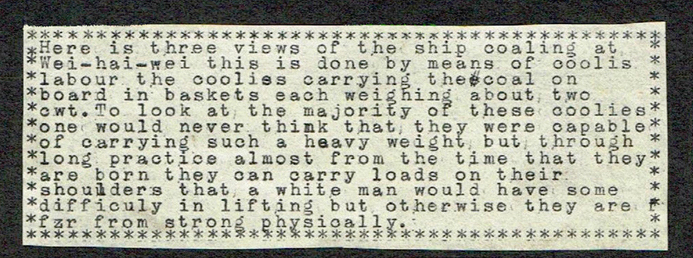
Images courtesy of Pictures Plus Postcards
